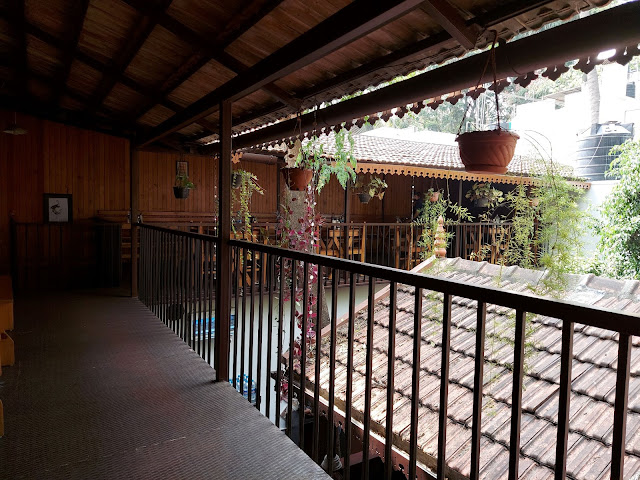Friday, April 29, 2022
Saturday, March 12, 2022
Poster: Forests of Imaginations
For the longest time, the forest has been the motif for the unknown, the veering away from which has defined the civilizational foundation of the contemporary world. Ironically, the looming disbelief in the projections of modernity has pushed many to return to the forest - figuratively and literally. In its form, the forest stands as a critique then, to the clarifying visions of modernity on the one hand but lurks as a revivalist recluse on the other. As an ever changing ecosystem of possibilities that is agile and adaptive to emerging transformations, the forest is a place of quiet agreements that allows coexistence/overlap of multiplicity of biodiverse forms. It offers no single route for navigation, no clear perspective of destination, no directed illumination for focus. It is precisely these refracted conditions that allow a variety of life forms to thrive together within its ambit.
What could it mean to return to the forest as an enterprise of the future? How do we prepare ourselves to inhabit the forests of the future? ‘Forests of Imaginations’ aims at interrogating the continued physical and intellectual disciplining of the territory, as much as nuancing the territory of the discipline itself. This conference seeks to tease methods and possibilities to inhabit futures skipped or sidelined in the aggrandizing narratives of tomorrows. In picking up the leftovers, reconsidering the philosophical truncations while also treading the at-hand tools of the contemporary, what deviations could we productively exploit and orchestrate in order to imagine and inhabit our upcoming times? These imaginations themselves would constitute a forest that may allow us to lose ourselves in a rediscovery of the self. Through such an investigation, one may be able to articulate spatial insights that could help us meander into the landscapes of tomorrow. These shall prepare architecture to become meaningful within a field of shifting perspectives of inhabitation, altering visual densities, creeping digital fragments and transforming ecological futures.
Wednesday, February 23, 2022
Design Ashram, Calicut (Kozhikode)
I entered Design Ashram in the music of a violin player who was also the keeper of the premises. He was sitting in his room behind the courtyard making his evening practice session playing traditional Carnatic tunes and then switching over to some more popular hindi music from the 90s. The sun had set and the lighting was mellow. A girl sitting under the tree with a book in her hand, waiting for the next line of her poetry, across two friends discussing over a book chapter. A young entrepreneur came and sat besides me. We exchanged smiles in the soft background violin music, triggering a conversation. He was a businessman dealing in steelware from Kerala and I was an architect-curator from Mumbai. Our conversation melted eventually in the fading music of the day.
The place is intimately scaled in a manner that it immediately embraces one or many. It has a unique quality of timelessness, with the large peepal tree in its central courtyard creating mad and magical shadows on the circumscribing inner facades of the building. I visited the place in February when the weather was much better, but I am sure that the place is as endearing during rains or summers. The courtyard feels active and lively even if there's no one around. At other times, it is occupied by gatherings for cultural events, performances, open mics, book reading or so on. Even if not so, the hostel space always keeps intersecting the various passers by with each other.
The hostel space offers retirement for 12 people. These are arranged in a large spacious volume with bunk beds and ample space for one person's storage. A mezzanine attic space has two beds without hampering the head-room, and creates a cozy, yet scaled environment. This mezzanine is created over the slab of the two washrooms below. The overall hostel beds are not segregated between genders meanwhile. The openness of the format offers opportunities for interaction, as well as privacy. Each bed is installed with a private reading light for the night time, and a lockable storage and side table besides.
The next morning as I came back from a walk of the neighbourhood, the dear violinist kindly asked me to share my documents for registration. Of the very few, he spoke to me in Hindi, realising that I was from Mumbai. I gently told him how I enjoyed his practice session over the earlier evening. He said he's learning hindi songs because he plays in weddings where he can keep the classical Carnatic tunes until the audience is filling in, but when the gathering is full, people expect more popular songs that they can connect to! When I expressed my expectation for the day to be woken up by his music in the morning, he said that it would only be on Sundays and Mondays, "Other days I only practice in the evening!" Packing my bags, I left the space soon after when he left me with a big smile. "I hope to meet you soon again...". "Zaroor wapas aa-jaiye", (Definitely come back) he said in his warm Malayali accent.
Monday, January 24, 2022
Friday, January 21, 2022
Charles Correa Gold Medal, 2008
From left to right: Kamu Iyer, Charles Correa, Narendra Dengle, Sen Kapadia watching over the entry 'Cinema for the Blind', Academy of Architecture
Charles Correa Gold Medal, 2008
Sunday, December 26, 2021
Saturday, December 25, 2021
Subscribe to:
Posts (Atom)






















































